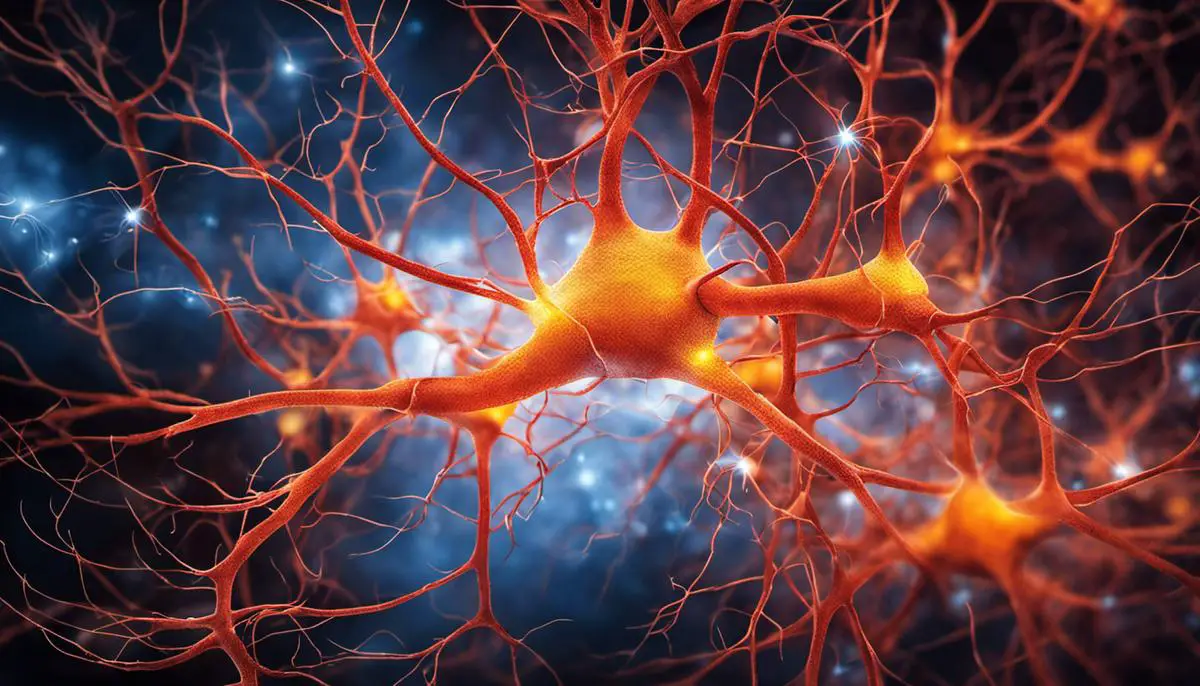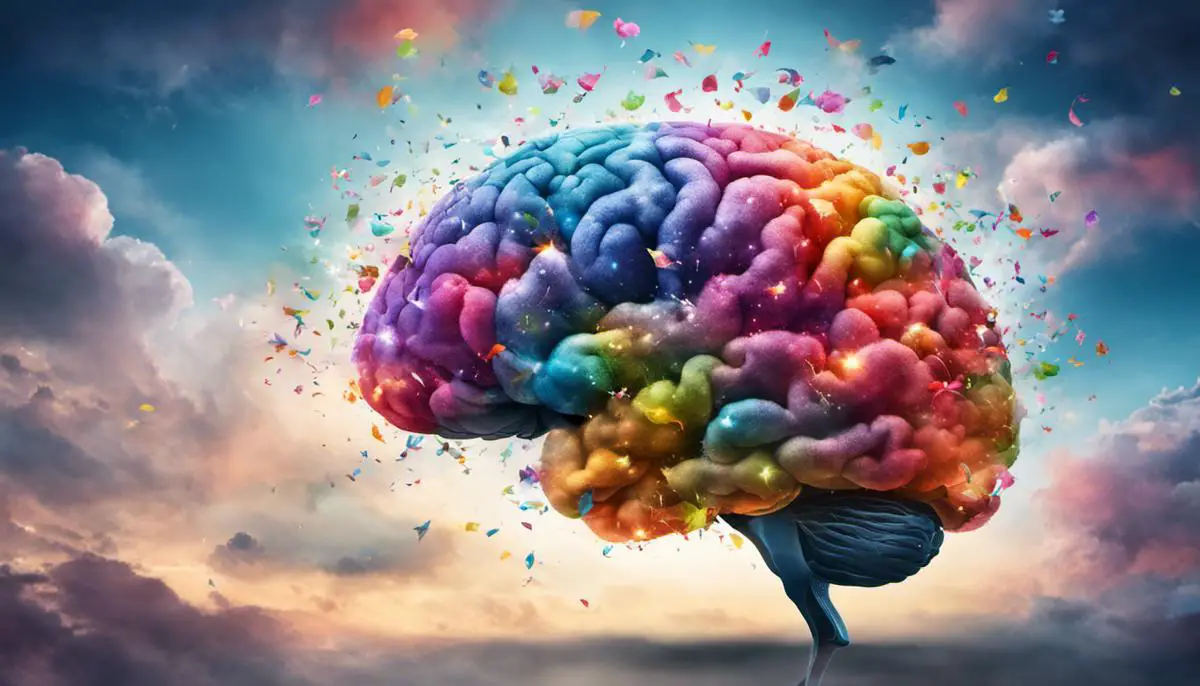The human brain is a complex structure rife with mystery. Within this complexity, medications like Lexapro work to regulate certain chemical imbalances, particularly those involving the neurotransmitter serotonin, a compound that regulates mood. Finding common ground between neuroscience and pharmacology, it is an SSRI (Selective Serotonin Reuptake Inhibitor), which has shown a potential side effect of inducing vivid dreams in users. This curated exploration embarks on a thorough understanding of Lexapro’s neurological effects and the crucial processes it navigates in the brain with a particular focus on the serotonin modulation and its correlation to dream vividness. Interlinking empirical insights with first-hand narratives, the review also considers the various studies, trials, and anecdotal records that bind Lexapro to the occurrence of vivid dreams. Finally, revamping the approach towards dealing with the side effects of Lexapro, a range of actionable strategies are proposed, aimed to manage and reduce vivid dreaming induced by this medication.
Neurological Effects of Lexapro
The Impact of Lexapro: Its Efficacy on Neurotransmitters and Influence on Dream Activity
Citalopram, commercially known as Lexapro, is a representative of the class of medications known as selective serotonin reuptake inhibitors (SSRIs), which exert their therapeutic effect by balancing serotonin levels in the brain to help maintain mental health. Notably, this regulation of neurotransmitters, particularly serotonin, can influence dream activity, expanding the scope of Lexapro’s impact beyond mere mood modulation.
Serotonin, a primary neurotransmitter synthesized in the brain, facilitates the communication between nerve cells. It plays a significant role in regulating mood, anxiety, sleep cycle, appetite, and more. The depletion of serotonin levels can lead to conditions like depression and anxiety disorders.
Lexapro works by inhibiting the reuptake of serotonin in synaptic gaps. Specifically, this medication prevents the reabsorption of this neurotransmitter into the presynaptic neuron, allowing more serotonin to be available in the synaptic cleft. This boost in serotonin levels enhances its action and helps restore an individual’s mood balance, providing therapeutic alleviation from depressive and anxiety symptoms.
Interestingly, the impact of Lexapro is not exclusive to daytime function. It significantly alters sleep architecture, including altering dream activity. While sleep involves other neurotransmitters, serotonin stands out for its role in dream formulation.
It is theorized that this influence on dreaming is the result of REM sleep disturbance caused by Lexapro. Rapid Eye Movement (REM) sleep is the phase of sleep in which most vivid dreaming occurs. Though SSRIs like Lexapro are known to suppress REM sleep, an initial disruption can lead to a rebound effect- a surge in REM sleep and possibly a most vivid dreaming when medication is withdrawn. This REM sleep rebound could explain the increased dream activity noted in several clinical studies.
Additionally, the suppression of REM sleep by Lexapro may lead patients to enter directly into a deeper stage of sleep known as slow-wave sleep, which may contain fragments of dreams, often vague and less narrative. Consequently, this overall shift in sleep architecture caused by Lexapro might lead to an altered perception of dream activity or dream intensity.
In conclusion, the mechanism of Lexapro impacts neurotransmitter regulation, particularly serotonin, to adjust mood imbalances. Its role, however, extends beyond the modulation of mood and encompasses shifts in sleep architecture, subsequently influencing dream activity. This understanding of Lexapro’s dual actions, particularly the modulation of dream activity, enhances the comprehensiveness of treatment approaches, providing a more holistic view of medication impact on patient mental health.
Further studies may expand on this subject to provide even clearer insight into the multifaceted implications of neurotransmitter modulation through Lexapro, and how these impacts on dream activity can be optimally leveraged for the effective management of depression and anxiety disorders.

Clinical Evidence Linking Lexapro to Vivid Dreams
In aligning the researched discoveries on Lexapro’s potential effects on dreams, there is a clear route displayed through clinical studies that substantiate this connection. Many of these investigations focus on the neuropsychopharmacological impact of Lexapro, an SSRI known scientifically as escitalopram, and its interaction with the complex machinations of sleep and dream architecture.
One marker that buttresses this connection is the evidence from studies conducted on Lexapro in the treatment of Post-Traumatic Stress Disorder (PTSD). We know from further exploration of this field of study that SSRIs, including Lexapro, have been considered effective in reducing nightmares or disturbing dream content often experienced by PTSD patients. Hence, in the context of this variation of dream experience brought about by Lexapro use, we see a clear nexus between the medication and dream processes.
The genesis of this connection can be traced to the medication’s influence on serotonergic transmission in the brain, specifically in the prefrontal cortex, a region responsible for dream activity and configuration. It’s worth noting that a research study conducted in 2014, published in the Journal of Clinical Psychopharmacology, reported that patients on Lexapro often experienced what is termed “dream intensification.”
These intensified dreams are often characterized by their vivid, immersive, and palpable nature, which many clinical respondents reported as a consistent phenomenon during Lexapro use. In some cases, these dreams were not necessarily nightmares or disturbing but were simply more pronounced and livelier than what these individuals would typically experience.
Moreover, research studies focusing on the rebound effect in sleep architecture after Lexapro discontinuation elucidate this connection further. Boehner et al., in their 2010 study on SSRI withdrawal, noticed an increase in dream vividness in patients during withdrawals. This was majorly due to what they dubbed as “REM sleep rebound.” It presents a unique insight into the powerful effects of Lexapro on the brain’s sleep-dream mechanisms, further validating the correlation between Lexapro and heightened dream vividness.
Additionally, a 2017 population-based study published in the American Journal of Psychiatry establishes a correlational link between escitalopram use, REM sleep reduction, and altered dream patterns. These findings, in unison with an array of other clinical studies, have repeatedly unveiled a consistent pattern: the heightened manifestation of dream vividity amidst Lexapro administration.
The research into this novel facet of Lexapro’s impact is growing, further elucidating the vast interconnected web of brain dynamics, drug interaction, sleep ecology, and dream processes. While it is evident that SSRIs like Lexapro influence the dreaming realm, it underlines the need for further inquiry. This would help to decipher the complete clinical implications, individual susceptibilities, and potential therapeutic applications of such interactions, contributing significantly to the field of psychopharmacology and mental health treatment strategies.

Managing Side Effects of Lexapro
Exploring Strategies to Address Lexapro-Induced Dream Side Effects:
Given the widely acknowledged impact of Lexapro—an SSRI notably active in serotonin modulation—on dream behavior, there is a compelling necessity to devise effective methods that can manage these unexpected side effects. The unconventional enhancement of dream intensity, sometimes referred to as “dream intensification,” coupled with alterations to sleep architecture, has newly colored our understanding of Lexapro’s comprehensive influence. This has prompted experts to identify ways to mitigate these outcomes, which while potentially beneficial therapeutically, can also prove discomforting or disruptive for some patients.
One primary approach emphasizes a tailored dosing regimen where the time of day Lexapro is taken is adjusted, potentially reducing the influence on REM sleep and ensuing dream activity. Taking Lexapro in the morning may avoid the spike in its effect being aligned with the primary dreaming sleep period generally occurring in the later part of the night. However, this may need to be balanced against other considerations, such as timing related to mealtimes and individual variations in drug metabolism rates.
Another avenue for exploration is the use of cognitive behavioral therapies (CBTs) aimed specifically at dream modulation. In the spirit of Nightmare-focused cognitive-behavioral therapy (nfCBT) or Imagery Rehearsal Therapy (IRT), patients could potentially gain constructive tools to interpret their altered dream content, or even reframe the narrative to make it a less distressing experience. This could transform a potentially negative consequence into a therapeutic opportunity.
Additional consideration should be given to the administration of Lexapro in conjunction with other therapies. Adjunctive medications, traditionally used to suppress REM sleep such as Clonidine, could potentially be utilized to control dream activity whilst continuing the full treatment regimen of Lexapro. The use of such a combination therapy should, of course, be carefully overseen by a qualified clinician to prevent potential pharmacological contraindications or undesirable effects, such as residual daytime sleepiness.
Moreover, the importance of integrating mindfulness techniques is worth acknowledging. Encouraging patients to engage in mindfulness-based stress reduction (MBSR) and other forms of relaxation-based practices can actually foster mental resilience and potentially alter one’s experience or interpretation of both waking life and dream activity.
As research continues, it is anticipated that our understanding of Lexapro’s two-edged influence on dreams will expand. Identifying novel strategies to manage the unexpected dream side effects while maximizing its therapeutic benefits is of paramount importance. Despite the pioneering work performed in this sector, the horizon of mental health treatment centered on neurotransmitter-modulating pharmaceuticals like Lexapro—along with their nuanced influences on sleep and dream patterns—remains vast and largely unexplored. The passionate pursuit of such knowledge remains at the heart of our endeavor to improve therapeutic strategies and heighten patient comfort and satisfaction.

The intriguing relationship between Lexapro and vivid dreams is increasingly gathering focus in the field of neuroscience and mental health. Though these dreams may seem unsettling to some, it’s crucial to remember that they are but a potential side effect of a medication aimed to bring equilibrium to the neurochemical balance in a person’s brain. With clinical evidence establishing a link and a range of effective techniques at our disposal to manage these side effects, both medical professionals and individuals have been equipped with tools to handle vivid dreams facilitated by Lexapro. From pharmaceutical interventions to lifestyle modifications guided by the latest research findings, users can find ways to navigate this part of their medication journey effectively and safely. The importance of professional mental health support during this phase is also highlighted, as professionals such as psychologists and psychiatrists can play an instrumental role in managing these side effects, ensuring a holistic approach to mental health care.
